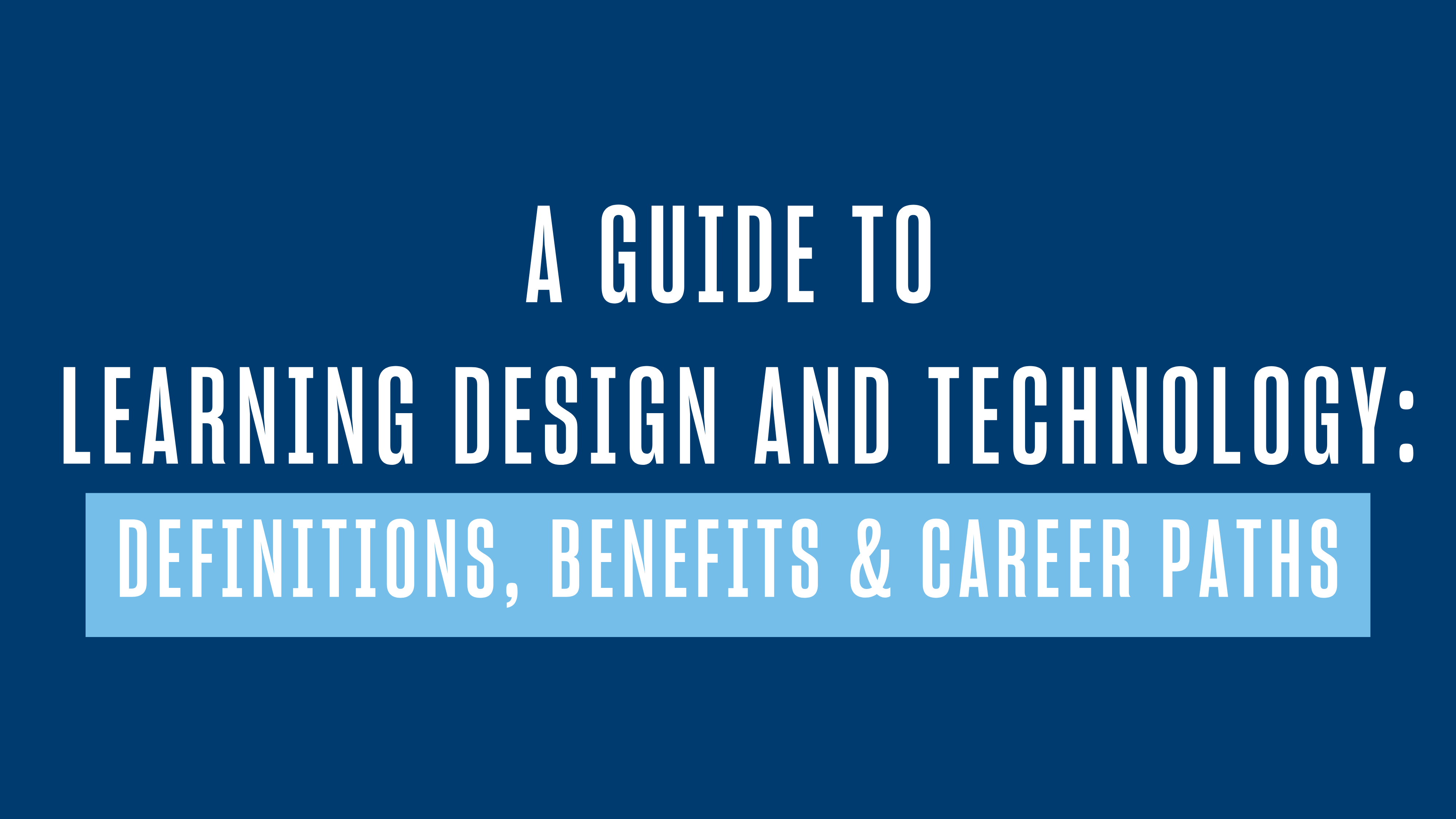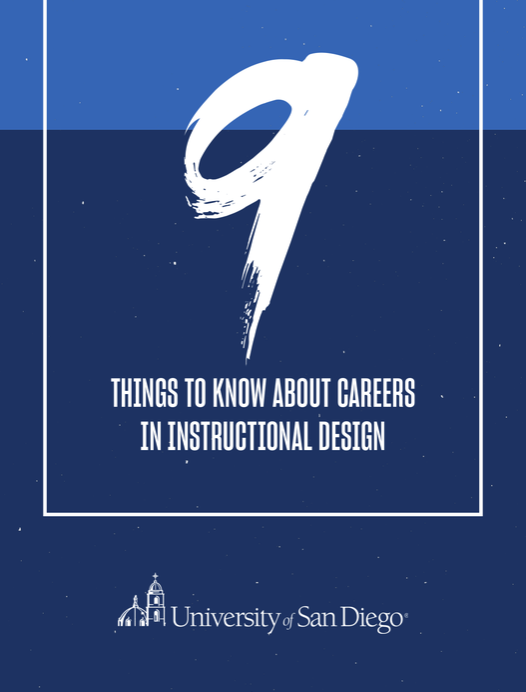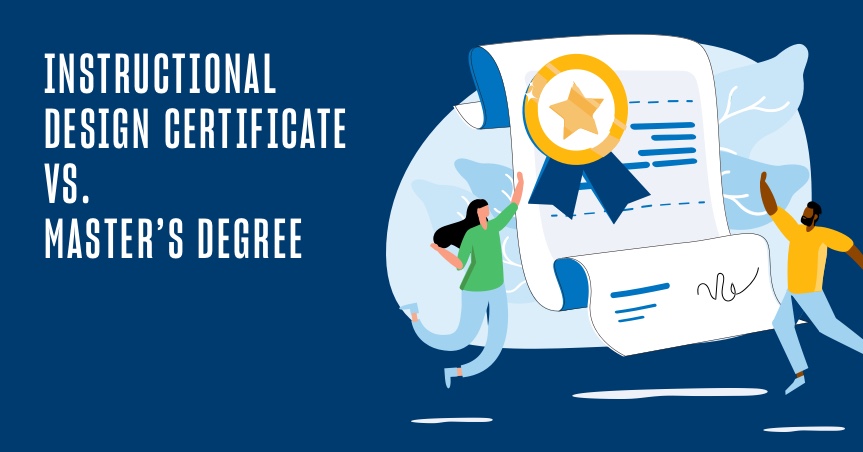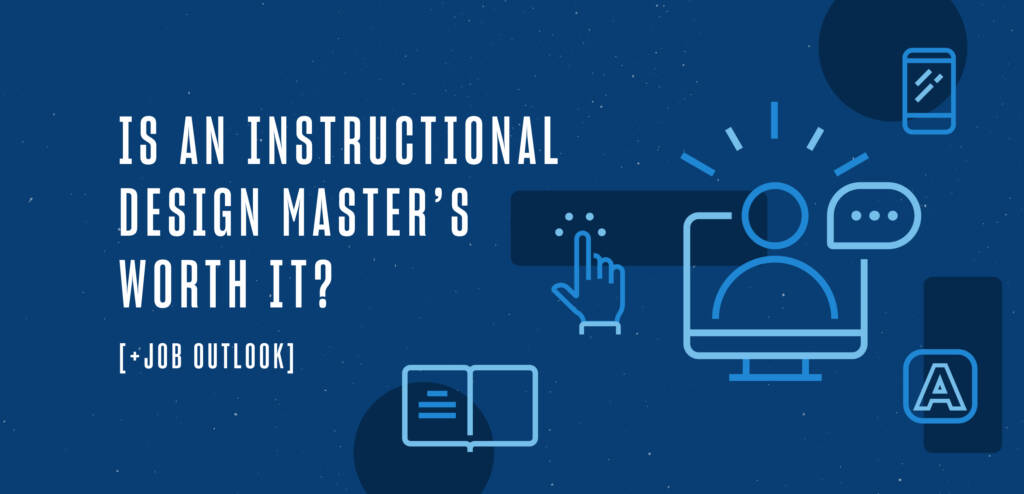In academic and non-academic settings, increased dependence on technology combined with broader access and a greater emphasis on hybrid learning has fundamentally changed how instruction and training are designed and delivered. To adapt to this new normal, academic institutions, businesses, government and health care organizations, as well as non-profits are rethinking how they approach their learning and training needs.
Fortunately, there’s a career dedicated to designing effective learning and improving outcomes, known as learning design.
What is Learning Design?
In Becoming a Learning Designer, Wagner (2021) defines learning design as “a creative pathway, with steps along the way, that guides someone from a point of introduction to a permanent change in knowing, doing, or being.” Others state that learning design is “about starting with the key learning outcomes, and creating learning experiences that support and reinforce them. It includes making decisions around structure, sequence, flow, content, timing, delivery, engagement, teaching and learning strategies, and opportunities for active learning” (Abilmona, 2021).
In layperson’s terms, learning design is a field that prioritizes learners and aligns instructional strategies, learning activities, assessments and outcome measures based on their needs.
Learning Design vs Instructional Design
You may hear learning design and instructional design used interchangeably, yet a helpful way to recognize the difference between instructional and learning design is to look at their titles as points of emphasis.
Instructional design primarily focuses on the systematic process of creating instructional materials and experiences that facilitate learning. Instructional design follows a specific instructional design model or framework and is primarily concerned with designing and developing instructional content, activities and assessments that align with specific learning objectives.
Learning design, in comparison, encompasses a broader view of the entire learning experience by considering various aspects beyond just instructional materials and activities. It takes a more holistic approach to the entire learning journey by considering larger factors, such as the learners’ backgrounds, their needs and goals as well as the learning context. The emphasis is placed more on the learner with the instructors focused on doing everything possible to ensure that students capture, retain and use the information taught to them.
Where instructional design is a systematic approach to instructional solutions, learning design takes a “yes, and” approach, combining instructional design and design thinking to promote a more human-centered and creative thinking path to designing learning solutions.
Benefits of Learning Design
While there are many benefits of learning design that largely depend on the target audience, there are a few widely applicable upsides to using learning design principles.
- Learning design leverages the experience and knowledge of the learners wherever possible to create more customized lessons.
- Learning design uses real-life scenarios to facilitate learning by linking the educational material to concepts learners already know and understand.
- It creates an immersive learning experience to give lessons immediate applicability.
- Learning design helps ensure learners engage in relevant and outcomes-aligned learning experiences.
What Are the Tools of Learning Design?
There are many ways to approach learning design, a few of the most common and widely used frameworks and models are:
- Bloom’s Taxonomy: Bloom’s Taxonomy is a framework used to categorize learning in a hierarchy that includes six levels of cognitive processes: remember, understand, apply, analyze, evaluate and create.
- Gagne’s Nine Events of Instruction: Gagne’s Nine Events is a framework used to organize a series of instructional events based on different learning styles to ensure students capture, retain and use information taught to them.
- ADDIE Model: ADDIE stands for analysis, design, development, implementation and evaluation, and is a process used to design effective training.
- Design Thinking: Design thinking is both a process and a mindset that takes a human-centered approach to problem-solving. The five phases of the process are: empathize, define, ideate, prototype and test.
- SAM Model: SAM is short for Successive Approximation Model, and is an agile design model that moves at a faster pace than ADDIE and has a heavy emphasis on building, testing and revision.
Learning Design Career Paths
Because learning opportunities exist in the classroom and outside of it, professional learning design experts are in high demand across various industries. The continual high demand for learning designers means high compensation, too — a recent search of online job postings* found that the average salary for a Learning Designer is $75,638, while the average salary for an Instructional Designer is $78,279.
Here are just a handful of common and in-demand careers in learning design, along with salary estimates*:
- Learning / Instructional Designer — Oversee the effectiveness of instructional and training solutions. From a high-level project management approach down to individual course and curriculum design, they work with subject matter experts to develop eLearning content and training programs. Average salary range of $70,390 — $86,390.
- Training and Development Specialist — Plan, conduct and administer corporate programs related to employee training and development. They are also responsible for reviewing, evaluating and updating training programs and materials. Average salary range of $57,948 — $77,844.
- Learning Consultant — Brought in to consult and work directly with educators to ensure that all instructional design goals are being met. They’ll evaluate existing curricula and resources and then provide recommendations to improve learning results. Average salary range of $68,931 — $86,816.
- Instructional Technologist — Responsible for the effective integration of hardware, such as computers and tablets, as well as software programs and applications into educational environments. Also responsible for meeting accessibility standards for technology. Average salary range of $55,247 — $79,147.
- Corporate Trainer — Provide training directly to employees within a business or organization. They help design and coordinate their professional development programs with team leaders, helping to develop organizational training goals and updating training methodologies. Average salary range of $50,835 — $64,535.
- eLearning Developer — Design and develop interactive and engaging online courses using learning technologies such as authoring software. They utilize multimedia development tools to create instructional content suitable for multiple learning modalities. Average salary range of $70,400 and $86,340.
* Salary estimates retrieved from Salary.com as of June 2023.
For more details on these and other careers in learning design and technology, see our blog post Top 10 Instructional Design Careers [+Salary Guide].
Education Requirements for Learning Design
The education requirements for becoming a learning designer depend on your career aspirations.
- Bachelor’s degree: Almost all jobs in the learning design field will require a minimum bachelor’s degree. Whether or not you hope to work in an academic setting, you will likely need a bachelor’s degree in an education-related discipline or a specific academic subject.
- Master’s degree: Most learning design careers beyond entry-level jobs will require an advanced degree, preferably in instructional or learning design. In fact, 88% of instructional designers reported having a graduate degree, according to a study by the University Professional and Continuing Education Association – UPCEA.
- Certificates/Licensure: Specific learning design careers, such as eLearning developer, may accept a certificate from an accredited professional organization or academic institution in place of a master’s degree.
Because learning and instructional design are increasingly popular and in-demand careers, there is also a growing number of master’s degree programs designed for this blossoming profession. At the University of San Diego, we designed our online Master of Science in Learning Design and Technology degree program to help current and aspiring learning designers develop a comprehensive understanding of the science of how people learn. Through an innovative curriculum, our students become proficient in the leading technology tools currently used in instructional/learning design and how to utilize them best to benefit learners.
See overview: University of San Diego – Master of Science in Learning Design and Technology





